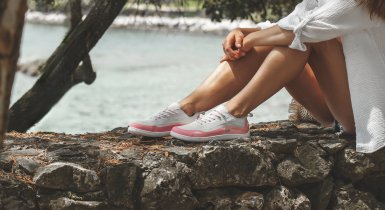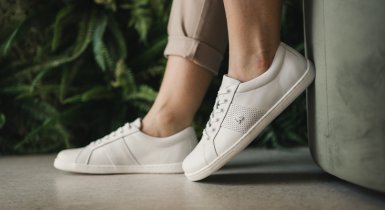Barefoot shoes attributes (Part 1): Anatomically shaped shoe

Barefoot shoes stand apart from traditional footwear due to their unique features. These shoes are characterised by four key attributes: an anatomical shape that mirrors the natural contours of the foot, lightweight and flexible materials that enable natural foot movement, a zero-drop design, which means the heel is at the same level as the toes, and a thin, flexible sole that offers a more natural and barefoot-like experience. Understanding these unique benefits is crucial for making informed footwear choices. In a forthcoming series of articles, we will delve into and compare these features with those of conventional shoes. The first article will closely examine the anatomical shape of barefoot shoes, highlighting how they differentiate from standard footwear and the potential benefits they offer for foot health and comfort. Subsequent articles will explore the lightweight and flexible materials, the zero-drop design, and the thin, flexible sole in more detail, providing a comprehensive understanding of the unique features of barefoot shoes.
Table of contents
- Foot-shaped shoes and the history of footwear
- Anatomical shape respecting the natural biomechanics of the human foot
- Benefits of anatomically shaped shoes
Foot-shaped shoes and the history of footwear
The human foot is a marvel of evolutional engineering, perfectly functional on its own, without a need for artificial help. Throughout history, however, footwear has played a vital role in human civilisation. A long time ago, our ancestors roamed the earth barefoot. As time went on, the need for protection from the environment led to the creation of simple forms of clothing and primitive foot coverings. Initially, people used skins and furs to safeguard their feet from injuries and provide thermal comfort. However, as human skills advanced, footwear became more sophisticated and technologically advanced. The focus shifted towards creating shoes that protected the feet and respected their natural shape. This evolution of footwear, from simple foot coverings to technologically advanced shoes, is a testament to the importance of foot health and the human fascination with footwear.
As society evolved, there was a significant shift in the perception of footwear. What was once purely functional became a matter of aesthetics. People began to prioritise the appearance of shoes over their original purpose, leading to changes in the shape and structure of footwear. The narrowness of shoes became popular due to the perception of a slender foot being aesthetically pleasing. Additionally, fashionable heels were introduced, not only to add height but also to create a sense of elegance and grace. However, this shift towards style over functionality resulted in shoes that no longer fully respected the foot’s anatomy.
As society evolved, there was a significant shift in the perception of footwear. What was once purely functional became a matter of aesthetics. People began to prioritise the appearance of shoes over their original purpose, leading to changes in the shape and structure of footwear. The narrowness of shoes became popular due to the perception of a slender foot being aesthetically pleasing. Additionally, fashionable heels were introduced, not only to add height but also to create a sense of elegance and grace. However, this shift towards style over functionality resulted in shoes that no longer fully respected the foot’s anatomy.
The concept of “foot-shaped shoes" may initially seem self-explanatory, but its historical and contemporary significance suggests otherwise. Contrary to common assumption, footwear tailored to the foot’s natural contours has not always been in vogue. This divergence from nature's design endured for centuries, persisting even today. However, akin to the cyclical nature of fashion, the impracticalities of unnatural shoe shapes and materials have gradually given way to a return to a more organic form – shoes that reflect the natural shape of the human foot. In the 21st century, the emergence of barefoot footwear marks a renaissance of sorts, championing shoes that honour the biomechanics and shape of the foot, providing functional protection against external elements and meeting the aesthetic sensibilities of contemporary society. Essentially, barefoot footwear reintroduces the age-old concept of wearing shoes shaped in harmony with the foot, presenting a revolutionary yet timeless approach to footwear.

Anatomical shape respecting the natural biomechanics of the human foot
Why must the shoe be shaped according to the human foot and respect its natural biomechanics? Why are anatomically shaped shoes the only right choice if we want to have healthy and functional feet?
Anatomically shaped shoes are designed to closely mimic and respect the foot's natural anatomy, providing optimal support for biomechanics. The unique shape of these shoes creates an environment that allows the foot to move freely without any constraints, providing ample space for natural movement. Additionally, the wide design of the shoes enables the toes to expand naturally during each step, supporting their natural function and movement.
Take a moment to consider the following experiment. It vividly demonstrates how the human foot naturally functions. No complicated anatomical diagrams or scientific graphs are needed. Here's how you can conduct a simple experiment to understand the natural movement of your feet. Find a comfortable spot at home and remove your socks and shoes. You'll only need a rubber band. This experiment is designed to simulate the effect of wearing narrow-toed shoes and the foot’s natural movement when walking barefoot.
First, place the rubber band over your toes so that it applies pressure to keep them close together. This simulates the effect of wearing narrow-toed shoes. Then, walk around on a flat surface and observe how it feels. You'll likely notice that your walking is not as fluid, and your balance may be compromised. You may even feel discomfort in certain areas of your feet due to the unnatural pressure.
Next, remove the rubber bands and take a moment to flex and relax your toes. Then, walk again. As you move, pay attention to how your toes naturally spread out upon impact with the ground. This natural movement provides better stability and a larger surface area for weight distribution. Unlike the constrained feeling from the rubber band, walking freely allows for an even distribution of weight across the entire foot, alleviating strain on specific areas.
This simple experiment helps to illustrate the intricate biomechanics of the human foot. It highlights how the muscles, bones, joints, tendons, and ligaments play distinct roles in the foot’s natural movement. The entire foot is engaged when walking barefoot, ensuring balanced weight distribution across the three main support points. This natural biomechanics of walking enhances stability and prevents overloading of specific areas, promoting overall foot health.
The chain reaction
The human body operates in a complex chain reaction, where the functionality of our feet plays a vital role in the well-being of our entire body. Every step we take directly impacts our legs, spine, and head, how we feel, and even our mood. When our feet function optimally, it prevents strain on our skeletal and muscular system, allowing our body to maintain proper alignment. As a result, even discomforts such as headaches and neck pain, which may have stemmed from foot-related issues, can be alleviated. Achieving this state of optimal functionality is best attained by walking barefoot or wearing footwear that mimics the natural movement of the feet when going without shoes is not feasible. Therefore, selecting footwear that conforms to the anatomical shape of the foot and supports its natural biomechanics to promote overall well-being is crucial.

Benefits of anatomically shaped shoes
Wearing anatomically shaped barefoot shoes can have a multitude of positive effects on both the body and the mind. Let's delve into a few of these benefits together. What transformative changes can we expect when transitioning from constrictive, uncomfortable shoes to anatomically shaped barefoot shoes that enable unrestricted freedom of movement?
Unrivalled comfort
Barefoot shoes are designed with a unique shape that gives the foot plenty of space to move and flex. This design allows the foot to move naturally within the shoe, never feeling confined or restricted. Unlike narrow shoes that can cause discomfort, the generous room in barefoot shoes enables the foot to move freely and in its natural state. This freedom of movement is what makes barefoot shoes exceptionally comfortable. Studies have shown that individuals who wear barefoot shoes can enjoy prolonged wear compared to traditional ones.
Prevention of injuries, foot health problems and deformities
Bid farewell to the discomfort of bruises, blisters, and ingrown nails, often resulting from wearing ill-fitting and narrow shoes. The foot is a complex structure, and when it is confined within a narrow shoe, it can lead to friction, resulting in painful bruises and blisters. Additionally, the pressure from narrow shoes can cause the big toe to be pushed or hit, potentially leading to ingrown nails. Moreover, narrow toe boxes and heels can disrupt the natural distribution of weight, potentially causing bunions and hammertoes. In summary, wearing narrow shoes can lead to foot deformities, injuries, and other related problems. On the other hand, when we opt for shoes that are anatomically shaped and the right size, we can avoid these issues. Barefoot shoes, in particular, provide an excellent solution by allowing the foot to move naturally, thereby preventing bunions and potentially correcting milder cases.
Improvement of toe mobility and strength
The wide front part of the anatomically shaped shoe offers ample space for the toes to move freely, promoting improved mobility and strength over time. Our feet, particularly our toes, have been constricted for years in narrow shoes, necessitating patience and time to rediscover their natural function and strength. Transitioning to barefoot shoes is the first step toward restoring their health. Incorporating regular foot and toe exercises into our daily routine will gradually regain functionality, allowing us to enjoy healthy and strong feet that support us for years to come.
Improvement of blood circulation
An anatomically shaped shoe allows your foot to move naturally and roll along its entire length with each step. This improves blood circulation and overall foot health and can help alleviate issues like cold feet syndrome. The improved blood flow ensures that essential nutrients and oxygen reach even the most distant cells, promoting better overall cell function and health.
Relief from leg pain and fatigue
The foot is less likely to experience fatigue and pain, even after a full day in an anatomically shaped barefoot shoe, thanks to the support of natural biomechanics. This is in contrast to conventional footwear, which can force the foot into unnatural positions, hindering its natural movement during walking and eventually leading to feelings of discomfort and exhaustion. Pain in the toes and heels can be caused by improper weight distribution, while pressure on the toes can lead to hallux pain. By allowing for a more natural gait and promoting better blood circulation, barefoot shoes offer relief from these issues and help alleviate the sensation of heavy, tired legs.
Improving posture
As mentioned, the human body operates in a chain reaction, with each part affecting the others. When we wear anatomically shaped, unrestricted shoes, our foot placement directly influences our body's alignment and centre of gravity through actions and reactions. Barefoot shoes help to reposition the centre of gravity, keeping the body aligned and improving overall posture. This realignment can alleviate back pain, neck pain, and headaches and reduce strain on the knees and hips caused by poor posture. Therefore, it's essential to start correcting the body's alignment from the ground up.
Support of the correct walking stereotype
The human foot is a marvel of natural engineering, with its toes designed to distribute and spread to support walking naturally. Conventional footwear often limits the toe's ability to function correctly, leading people to step mainly on their heels, which can cause heel pain. While the heel is a reliable shock absorber, it cannot handle all the shocks, especially on hard surfaces such as concrete or asphalt. Wearing anatomically shaped barefoot shoes gradually changes our walking pattern. We start to step on the middle or front part of the foot and roll it gradually, which is considered the correct walking pattern. Having ample space for the toes to move supports balance and shock absorption, helping the foot to function as it was naturally designed to.
Improving physical performance
The last benefit we mention is the icing on the cake ☺. All the benefits mentioned above, such as improved toe mobility, injury prevention, enhanced blood circulation and balance, and maintaining correct posture and walking patterns, collectively contribute to improved performance, especially in sports. If you want to run faster or perform better, consider swapping your regular shoes for anatomically shaped barefoot shoes.
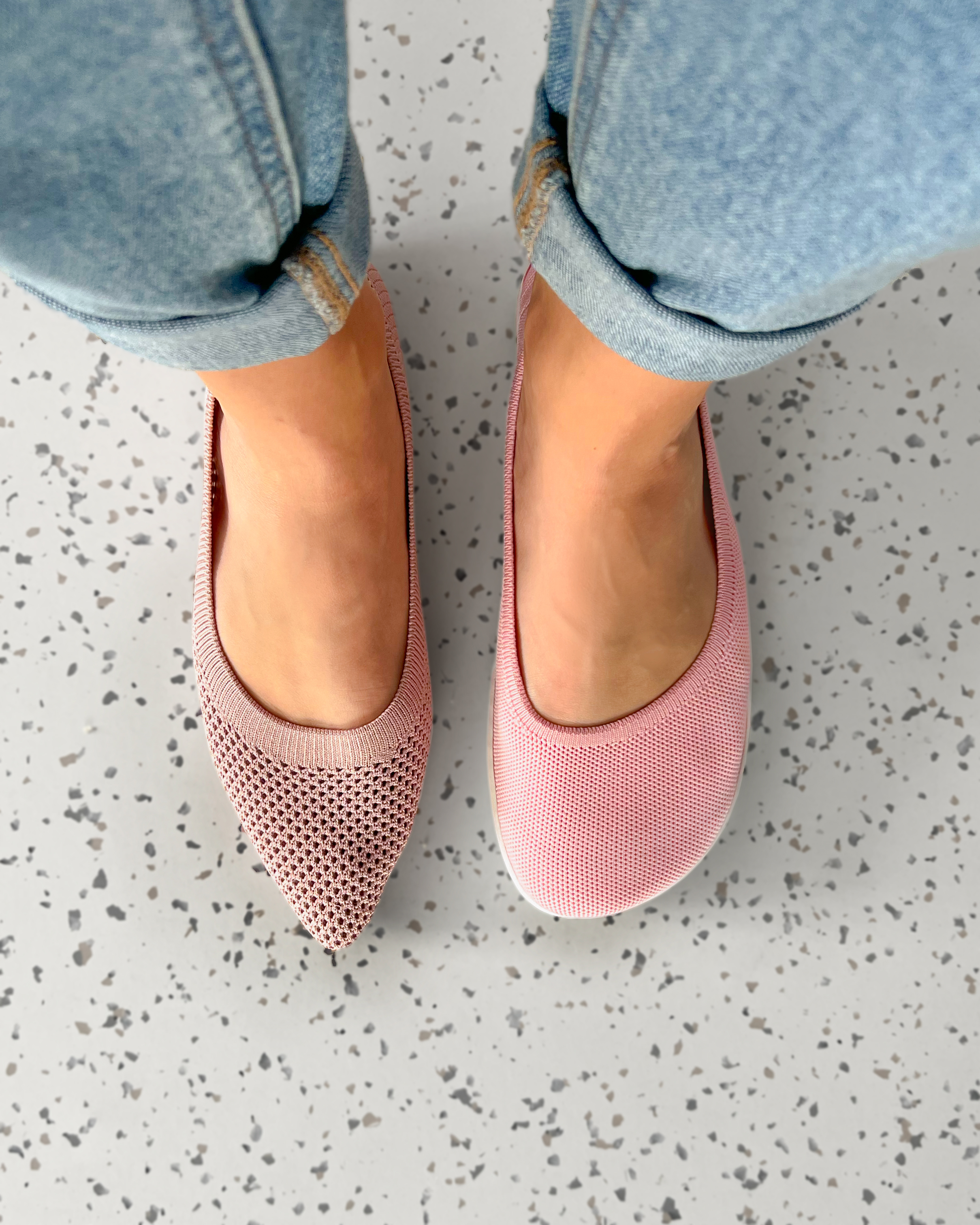
Foot-shaped shoes or shoe-shaped feet?
After reading the article, it is clear that shoes should be designed to fit the foot rather than forcing the foot to conform to the shoe. Wearing shoes has evolutionary significance, especially in protecting the foot from the weather and the environment. However, wearing shoes restricting natural foot functionality and not corresponding to the foot's anatomy is no longer necessary, as we now have more choices regarding footwear than ever. Shoes not respecting the human foot’s natural anatomy can cause more long-term issues than benefits. While evolution has made wearing shoes unavoidable, it has also ensured that the foot is fully functional without artificial support. Therefore, to maintain and encourage foot natural functionality, we must pay more attention to the functional aspects of footwear, with aesthetics being a secondary consideration.
Anatomically shaped barefoot shoes maintain the natural position and function of the toes, which is essential for healthy movement. These shoes do not restrict foot movement and mimic walking barefoot while providing protection from the environment. Barefoot shoes support biomechanics perfectly and adapt to the foot's needs. To prioritise our health and foot comfort, it's worth giving anatomically shaped barefoot shoes a chance, as they align with the evolutionary needs of the foot. And because we know that only one shape is the right shape ☺.


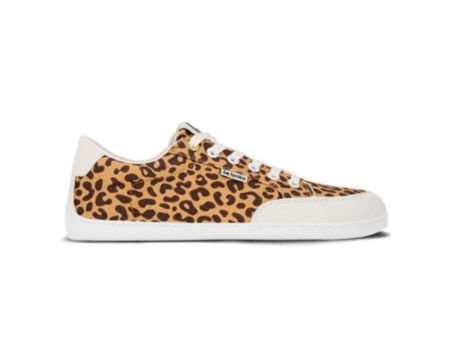

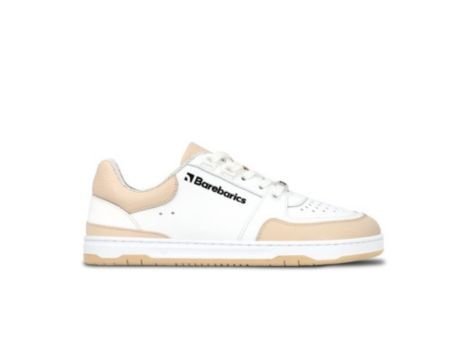
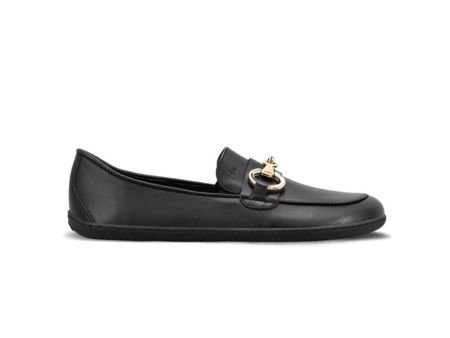
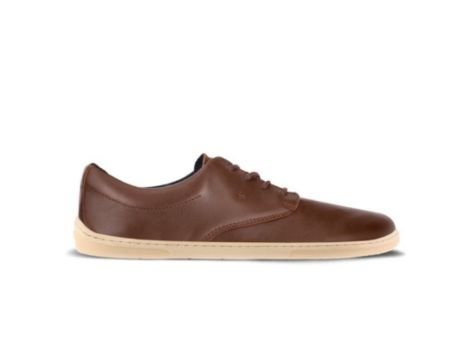


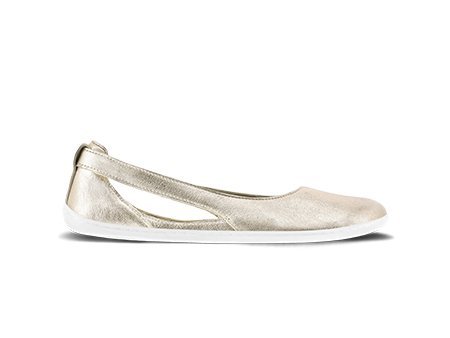
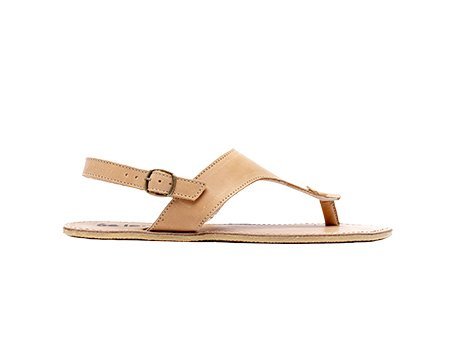

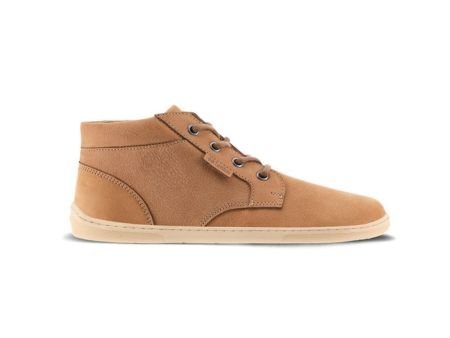
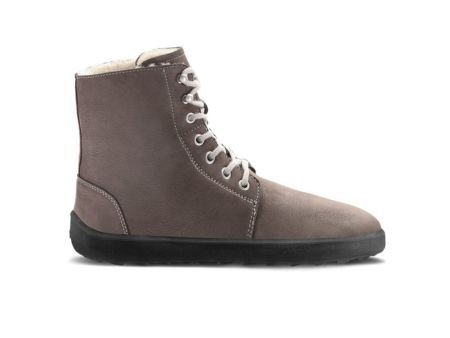
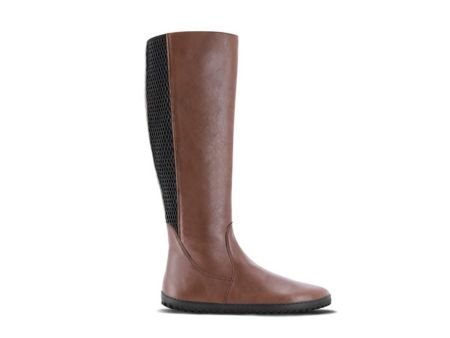


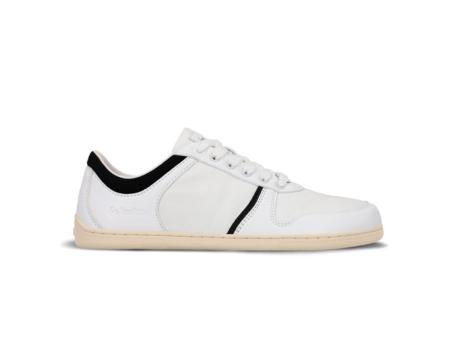
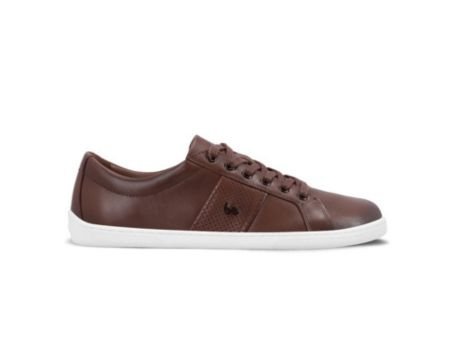
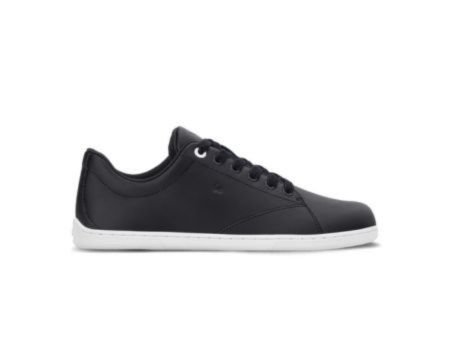
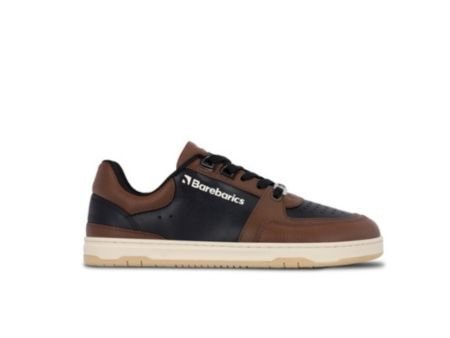






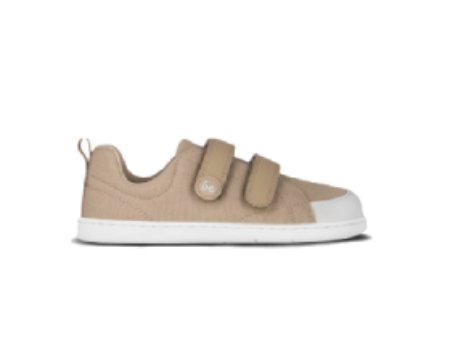
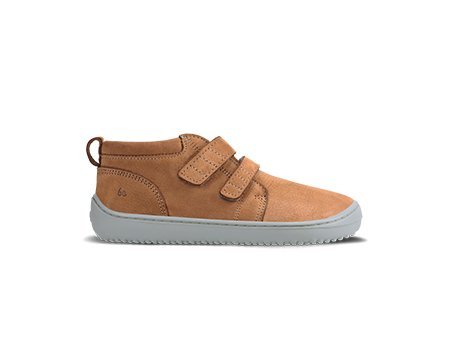
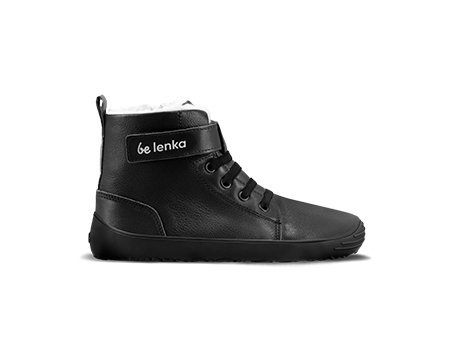
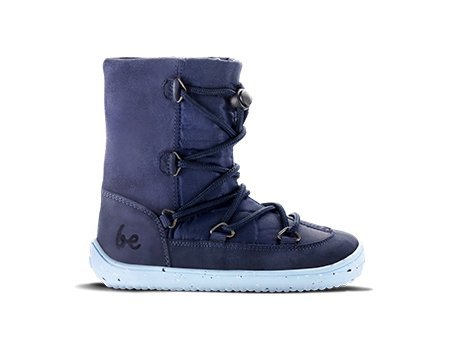


 Be Lenka
Be Lenka

